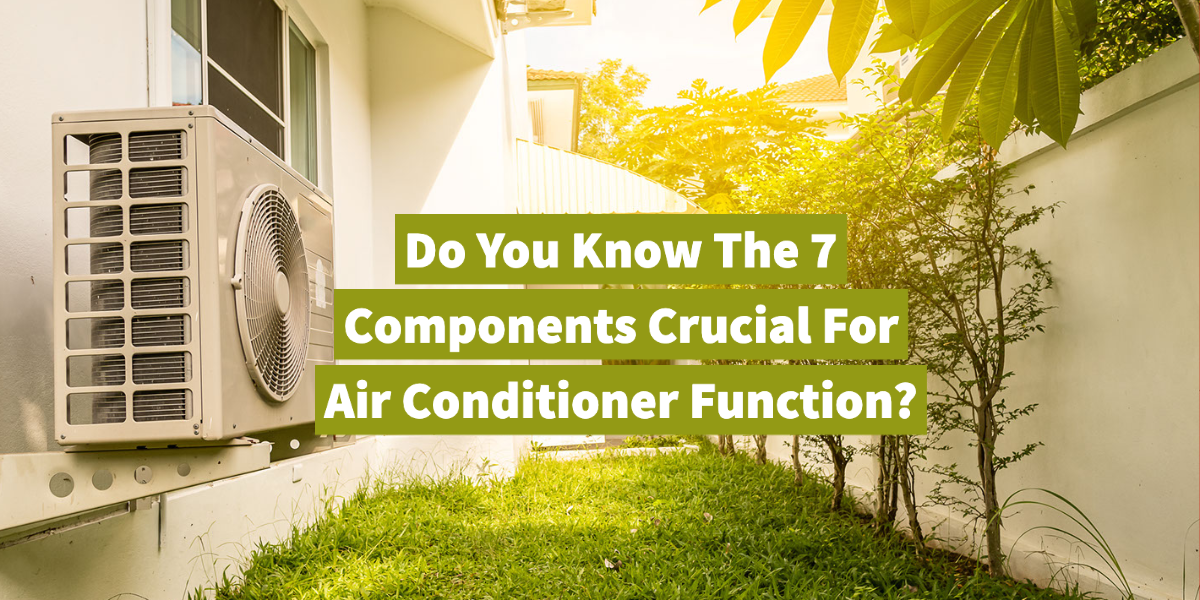Although most homeowners take their residential air conditioning for granted, especially if it is operating properly and keeping them cool. Understanding the components that make up your air conditioner may help you when things go wrong. Our air conditioning professionals at Centerville Heating & Cooling can explain each part and why it’s necessary for the operation of your home’s cooling system if you’re unfamiliar with the elements that make up an air conditioner.
Evaporator Coil
Evaporator coils are an important component of your air conditioner since they absorb all the heat from your house. The liquid refrigerant in the evaporator coil is collected by copper tubes, which are depressurized by the expansion valve. As a result, the heat in your home will be absorbed as air passes over the cold coils. In order to deliver heat through condenser coils, you’ll need a condenser fan to blow air over them; similarly, evaporator coils require indoor air handlers to force air over their surfaces. When refrigerant absorbs heat from the air within your property, it evaporates and becomes a vapor.
Compressor
The air conditioner’s compressor is responsible for compressing the refrigerant, thus raising its temperature. Due to the combined gas law, made up of Gay-Lusaac’s Law, Charles’ Law, and Boyle’s Law, compressing refrigerant heats it. Doing this helps remove the heat from your household to the outdoors. However, to remove the heat to the outdoors, the refrigerant must be at a higher temperature than the air outdoors. For this reason, the compressor boosts pressure, allowing refrigerants to achieve those higher temperatures.
Condenser Coil
In contrast to evaporator coils, generally placed inside an air conditioner unit, condenser coils are usually on the outdoor unit. The condenser coils transport hot refrigerant while the evaporator absorbs cold refrigerant. Condenser coils are intended to aid in heat exchange from within a home to the exterior environment. The condenser fan blows air over the coils, causing heat energy to be released into the outdoor environment as the refrigerant is cooled. When the refrigerant temperatures are reduced, it goes to the expansion valve as it changes from a gas to a liquid.
Expansion Valve
The refrigerant leaves the condenser in a liquid state, but it is still far too hot to enter the evaporator coils and must be cooled. The expansion valve, located between the evaporator and condenser, has a crucial role. The expansion valve depressurizes the refrigerant. As a result, pressure is relieved in the evaporator coils, cooling the refrigerant and transforming it from a liquid to a gas.
Air Filter
Filters in your air conditioner remove pollutants like dirt, pathogens, and dust from the air inside your home. Depending on whether you want to keep your air conditioner going for years to come, improve the quality of the air inside your property, or both, replaceable filters have a variety to choose from and should be replaced every 1 to 3 months.
Refrigerant
Because it has been mentioned a few times in this article, you may be curious as to what refrigerant is. Refrigerant is a vital substance used to transfer heat from the inside of your home to the outdoor atmosphere with the help of air conditioning technologies. This substance is utilized because of its ability to transform from a liquid to a vapor at appropriate temperatures.
Refrigerant circulates through your air conditioner’s tubes and copper coils, linking the indoor and outdoor units. Heat is absorbed by the indoor unit, causing the refrigerant to change from a gas to a liquid, then carried outside to remove heat from your home. When the heat is removed from your property, the refrigerant inside will change back to a gas and flow back into it. This process will repeat as long as your air conditioner is switched on to keep your home cool and comfortable.
Thermostat
Thermostats are the control center for your air conditioner since it regulates the ideal comfort and temperature levels in your home. If the temperature in your house exceeds your desired cooling target, your thermostat will instruct your air conditioner to turn on. Depending on your settings, a thermostat’s sensitivity to temperature and humidity may differ. Equipment should be kept in an out-of-the-way location so as not to interfere with the functioning of your air conditioner and its home comfort settings.
Recognizing your home cooling equipment is easier than ever! If you still have issues understanding your air conditioner and want expert assistance, contact our HVAC experts at Centerville Heating & Cooling right now! Call us today at (937) 353-1169 or schedule an appointment online now by clicking here!





